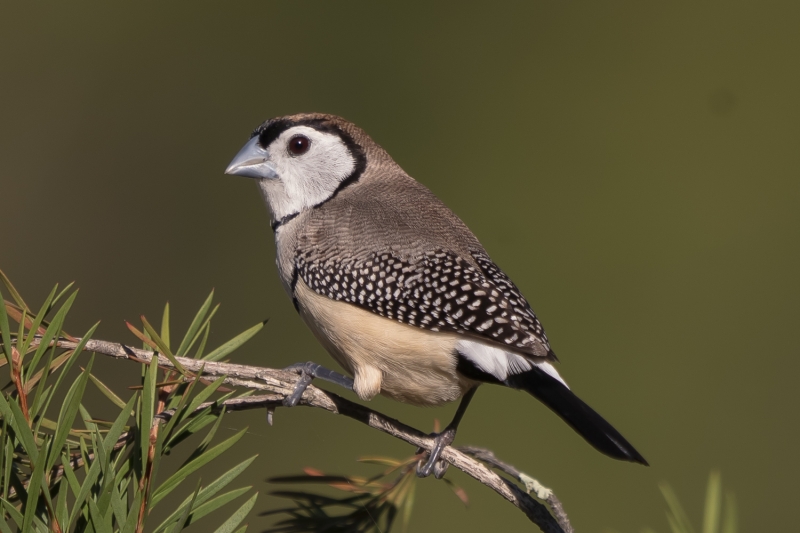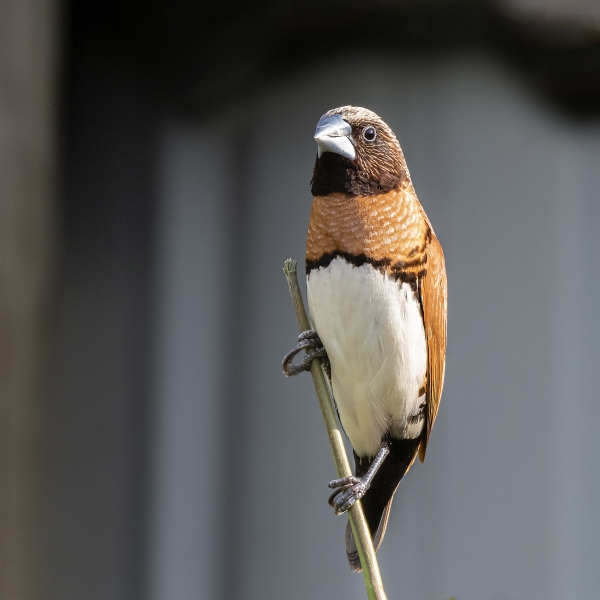First, congratulations to all photographers who entered our Entry level category. By entering competitions like ours, it forces you to cast a critical eye over your images. It may be your first step in realising your full potential as a photographer, so well done and stick at it.
Based on the images I viewed in this competition I felt it might be worth outlining what are the basics that go into creating a pleasing bird image.
- The subject needs to be sharp, especially the head. If the subject is not sharp then this can detract from the overall image. Some of the images I viewed lacked detail on the bird and were just not sharp. If you want to improve your images, make sure they are sharp. Practice, practice and more practice in the field will help here.
- Correct placement of the subject in the frame. The "rule of thirds" is often referred to as the best guide to assist with this. A simple Google search will present many tutorials on this subject. Generally a good bird image will give the subject room in front of it. Try not to crop too hard as was the case with some images submitted.
- Good exposure is the interplay between our shooting speed, ISO and F-stop adjusted with consideration to the conditions. Knowing how to adjust them is critical in obtaining correct exposure. As an entry level photographer I would encourage you to spend time in the field with a more experienced photographer, their knowledge on how to correctly expose images will be invaluable. Shooting RAW can help but don’t rely on that alone.
- Beware distracting backgrounds. Taking two or three steps to the left or right can give you a cleaner background. The best photographers I know really consider their backgrounds because they matter. A great bird image can be ruined by a bad background.
- One final thought: I would encourage you all to make regular use of our Critique gallery. This would give you excellent feedback from some of our most experienced photographers and will be well worth your effort.
Winner - Double-barred Finch, by Russell Dann (mage ID 40366)
This bird is one that can cause a photographer exposure issues due to the contrasting colours range. The photographer has exposed the subject expertly and maintained a good level of detail across the bird. The head position and sharp eye engages the viewer immediately. The side-on position of the subject displays the beautiful patterns and colours of this bird. The background is clean and serves as a subtle contrast to the bird. I feel this image could have been improved by positioning the subject further to the right, giving more room in the front of the bird. There is also a distracting dust spot to the right of the bird which could be easily removed. Overall this is a lovely image of a beautiful finch.
Highly Commended - Zebra Finch, by Diana Womersley (Image ID 40088)
The classic side body and head position and sharp eye immediately engages the viewer. Nice light falls evenly across the bird with no distracting shadows. The lights and darks in the image have been correctly exposed resulting in good detail across the subject. The uncluttered background directly behind the bird is of similar colour providing a nice soft consistency. The green foliage around the bird provides a good contrast to the subject itself. The other aspects of this image I like is the correct level of sharpness of the subject resulting in a natural look. The subject is well positioned in the frame with good room in front of the bird. Congratulations to the photographer of a lovely capture of an iconic Australian bird.
Commended - Chestnut-breasted Mannikin, by Graham Gall (Image ID 39771)
The challenge with this image is the ability to expose correctly due to the light hitting the right hand side of the subject and casting a shadow on the left had side. The photographer has done a good job of dealing with this however the detail in the white front of the bird and the dark of the throat has suffered with detail being lost. The all important head and eye have been captured well with good levels of sharpness and detail showing. Congratulations on a lovely capture.
Commended - European Goldfinch, by Graham Gall (Image ID 39694)
The strength of this image is the way the light illuminates the face of the subject drawing the eye immediately. There is good detail on the bird in the light areas however detail is lost in the darker areas. The head and eye are sharp which is critical in bird photography. The subtle background colours compliment the bird and makes for a pleasing overall image. The colours have been well rendered so the image is a very nice natural representation of the European Goldfinch, well done.
Commended - Red-browed Finch, by Jenny Donald (Image ID 40530)
I particularly like this image as it has captured this bird in an environment where we see many finches, on the ground. I like the way the jungle green colours and patterns contrast the fawn colours of this bird. The photographer seems to have captured the exact moment when the bird has become aware it is being photographed. The subject could have been a little sharper but there is enough acceptable feather detail. Photographing a small bird in all this grass requires skill that would challenge the best. The effort was worth it, resulting in a delightful image.
Commended - Zebra Finch, by Diana Womersley (Image ID 40068 - image no longer available)
This is a lovely image of two Zebra Finches. The light on the two subjects is perfect, illuminating their lovely detail. The heads and eyes are sharp, exposure is great and the bird at the centre of the image immediately engages the viewer. The foliage is a good contrast to the main subject, however there is a level of distraction from foliage that runs across the chest and tail of the two birds. An excellent image impacted by distracting foliage, a photographers lament!
Special Mentions
White Fronted Chat, by Donna Evans (Image ID 40160) - Well captured low angle image with good detail. These Chats are not easy to get close to, so well done.
White Fronted Chat, by Donna Evans (Image ID 40161) - Another nice low level image with the subject still moving toward the photographer, excellent detail on the bird.











